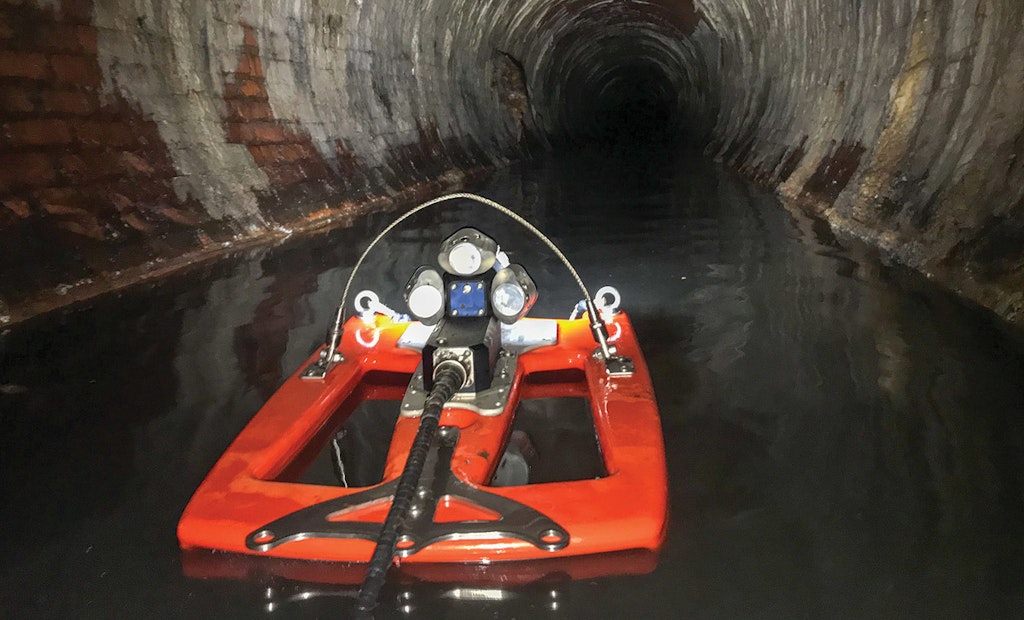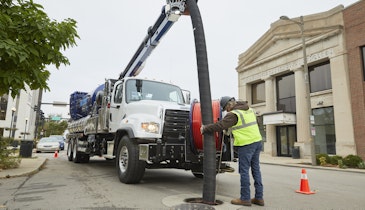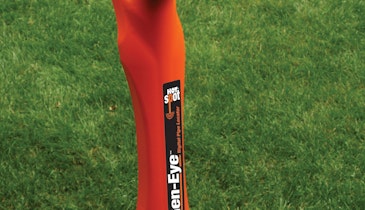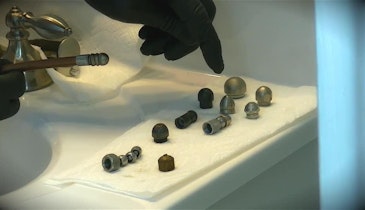
Pipetek Infrastructure Services uses a Proteus floatation raft to inspect an 80-plus-year-old brick interceptor line that runs under Woodward Avenue, a major thoroughfare in Detroit, making it a poor candidate for a sewer bypass.
Interested in Inspection?
Get Inspection articles, news and videos right in your inbox! Sign up now.
Inspection + Get AlertsWhen the water level in a partially surcharged sewer is too high for a tractor-mounted camera to perform inspections, the conventional solution is a costly, time-consuming and disruptive sewer bypass.
But Pipetek Infrastructure Services, a Michigan company that cleans and inspects sewer lines and locates and maps utility lines, sails through such situations with a Proteus flotation raft made by Mini-Cam InPipe Innovation. The device reduces customers’ costs and minimizes confined-space entry, says Mike Hagan, operations manager for the company, based in Livonia, a western suburb of Detroit.
The company pairs the raft with a Proteus CAM028L camera head, he says.
The company invested about $12,000 in the raft to solve a problem encountered while inspecting an approximately 1-mile-long section of a large-diameter interceptor line that runs under Woodward Avenue in downtown Detroit, known locally as “Detroit’s Main Street.”
The more than 80-year-old line, which ranged from 72 to 108 inches in diameter, was at high flow. And bypassing it wasn’t a good option, Hagan says.
“We weren’t quite sure how we could inspect this pipe. Woodward Avenue is a very busy road, so it would’ve been difficult to bypass the sewer line.
“There also was some debris under the water line, which would challenge a tractor-mounted camera. Plus the water was 2 to 3 feet deep in some places.”
But equipped with the raft, the Pipetek crew was able to inspect to perform the inspection in about two days.
Floating profit center
Made from durable, impact-resistant polyethylene, the device is just more than 2 feet long and about 1 1/2 feet wide, so it fits through a standard manhole. It weighs 12.7 pounds and features a built-in cable loop for lowering it in and pulling it out of manholes. A so-called “flotation plate” keeps it balanced and eliminates bobbing and rolling.
The unit also features three ultrabright light modules that provide enough illumination even in pipes larger than 80 inches in diameter.
The CAM028L camera head features 10x optical zoom by 12x digital zoom, for a total of 120:1 zoom capability; six built-in LED lights for better video clarity; twin lasers for taking measurements; a side-distance sensor for measuring pipe diameter; and pan-and-tilt capability. The camera cable plugs into the rear of a camera-adaptor device on the float.
To use the device in manhole-to-manhole inspections, Pipetek stations one of its dozen combination sewer vacuum trucks (made by Vactor, Hi-Vac Corp., Super Products and Vacall Industries) by the downstream manhole. Then employees use a jetting nozzle to transport a rope to the upstream manhole, where it gets tied to the raft.
After that, an employee at the downstream manhole pulls the raft from the upstream manhole, rather than relying on flowing water. Manually pulling the raft keeps the line taut in order to get accurate reel measurements, Hagan explains.
Heading downstream
“We always pull it downstream,” he says. “We try to stay at the industry standard of 30 feet per minute, which is the maximum recommended speed from the National Association of Sewer Service Cos. But we typically don’t even go that fast because we’re usually stopping every few feet to take pictures and code defects.”
If a company doesn’t own a vacuum truck, Hagan recommends tying a roll of rope to a 2-liter soda bottle, floating it from an upstream manhole to a downstream manhole, then cutting the rope at the upstream manhole and tying it to the raft. Then the downstream crew can remove the rope from the bottle and pull the raft.
To halt the raft or even pull it backward, just stop the camera-cable reel or retrieve a little cable, he says.
There’s no problem with choppy video because keeping a taut line stabilizes the raft. “We even have let it just flow on its own because there was no downstream manhole, but it’s a lot harder to control that way.”
The unit is durable and user-friendly, Hagan says, noting it has performed 30,000 to 40,000 feet worth of inspections with no issues.
No bypass
Pipetek primarily uses the Proteus raft/camera combo — purchased from Visual Imaging Resources, the official North American distributor for Proteus equipment — for inspecting larger municipal sewer lines, usually 36 inches in diameter or larger. The company also owns several camera trucks that carry inspection cameras made by Proteus and IBAK Helmut Hunger GmbH & Co. KG.
“Seeing how it performed on the Detroit interceptor line opened our eyes to other applications where it’s difficult to get a conventional camera tractor through a line,” Hagan says.
For example, in September 2019, the company inspected roughly 3,200 feet of 48-inch-diameter stormwater sewer lines in Portage. At the time, the water levels in local lakes were unusually high, so the lines were partially surcharged, he says.
“It would’ve been impossible to dewater those lines. We couldn’t see the entire pipe because of the high water levels, but we got a good look at their structural integrity.
“Overall, the flotation raft makes us money by allowing us to complete jobs we normally wouldn’t be able to do. So now when an engineer comes to us and needs a partially surcharged pipe inspected but doesn’t want to spend the extra money to bypass it, we have a solution to offer.
“It’s another tool in our box to get the job done for our customers.”





